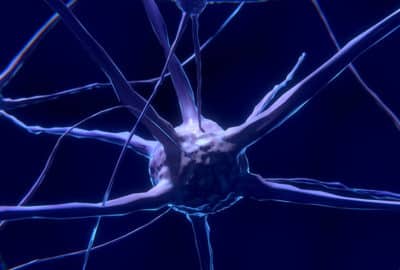What can batteries of the future learn from eels?
Wednesday 5th Feb 2025, 12.30pm
Electric eels are pretty amazing creatures. Their bodies can release powerful electric charges – in some cases reaching 650 volts! So, what can scientists learn from these animals? Could nature hold the key to advancing our own energy solutions? We chat to Dr Yujia Zhang about how electric eels might inspire the batteries of the future.
Emily Elias: Electric eels are pretty crazy. They can release a charge of up to 650 volts. And nature has figured out a way for it to store all of that power inside its weird little eel body – so maybe there’s a lesson in there for us. On this episode of the Oxford Sparks Big Questions podcast we are asking; ‘What can batteries of the future learn from eels?’
Hello, I’m Emily Elias, and this is the show where we seek out the brightest minds at the University of Oxford, and we ask them the big questions. And for this one, we have found a researcher who is not freaked out at all by eels.
Yujia Zhang: I am Yujia Zhang, originally from China, but now I’m doing my post-doc research in Oxford’s Chemistry Department, and my research has been always focusing on biointerface. Basically, previously I used bioelectronics a lot, to fabricate skin electronics, wearable devices, and implantable electronics. But now I’m switching on to more iontronic side of it. Basically, I’m trying to develop an iontronic system to interface with cells and tissues, and eventually, I hope to implant my iontronic systems into animals to do the implantations and etc.
Emily: Okay, so bioelectronics that sounds like the stuff of the future. Okay, so one of the things that you are looking at is batteries, right?
Yujia: Yeah. Yeah.
Emily: How do we then put this sort of world of biotech and batteries together?
Yujia: So speaking of bioelectronics or all those implantable devices, one of the key elements is the battery. That is because all the devices currently need some power source to perform their activities. Although we can use such as wireless energy transductions or some energy harvester, but I guess fundamentally batteries are still one of the main elements people need to develop. So that’s why my research also focuses on developing these implantable batteries, or sort of like bio-batteries.
Emily: Implantable batteries, okay, so that is a key part of this. This podcast is about eels. So how do eels come into the world of implantable batteries?
Yujia: Right, so it’s actually a very interesting idea. So, in nature, the electric eel is a fascinating animal because it can generate sort of an ionic power based on this biological mechanism. And therefore, we start to think of maybe having to mimic the electrical eel in terms of fabricating a biological or a bio-inspired battery and eventually to use that into our research and for biological applications.
Emily: When you’re looking at a battery that we’re sort of like in our kitchen drawers, I mean, that’s pretty a mechanical way of like this thing, touches this thing, and it’s in this fluid, and then that energy comes through it. How does an electric eels work?
Yujia: Okay, so the electrical eel is actually a very amazing animal. And in the electrical eels, it has this specific cell type called the electrocyte. And how the electrocyte works is like on its cellular membrane, it has this different cation channels and it can be asymmetrically open and close the sodium and potassium channel. And let’s say on the left side, the sodium channel is open and therefore sodium can move into the cell, and on the right side of the cell membrane, the potassium channel opens, and therefore potassium can leak out from the cell to the surrounding environment. And therefore by this asymmetric open and close, the electrical eels can generate a directional ionic flow. And the directional movement of ions basically [unaudible 03.57] to the electricity.
Emily: So within its sort of like membrane of the cells, it’s able to sort of generate a current and pass it through its body?
Yujia: Yes, exactly. And for a single electrocyte, it could generate a voltage of around 150 millivolts. But in total, the electrical eel has thousands of those electrocytes together and it could generate a voltage of 600 to 1000 volts. So it’s a very large voltage.
Emily: Yeah, that sounds like a lot of volts! Okay. So if you were to able then figure out how the volts are in that eel are working, in theory, you could turn that into a battery that could then like keep a pacemaker going, or doing something else.
Yujia: Yes, exactly. The long-term goal is of course to use the device for that. And in terms of how we achieve that, so basically, as I said, the key of the electrical eels is membrane, right? And basically if we want to mimic that, we need to create a device or to use the material to mimic that membrane structure. And in our work, the way we do it is we use droplets. Basically, we use 3D printing technique to deposit droplets and in those droplets, we can contain charge selective materials, basically mimicking the charge selective or the membrane channels of electrical eels.
Emily: So within sort of one droplet, like you would see coming from an eyedropper, you would have all these different chemicals doing all these different reactions, mimicking what happens inside the electric eel.
Yujia: Exactly. And in those droplets, we can contain charge selective materials, basically mimicking the membrane channels of electrical eels. And by a range different charge selective materials together, in forms of droplets, we can mimic the membrane structures of electrical eels and therefore, we can generate output power, and that is the way we build our droplet batteries.
Emily: When I think of a battery, I think of something that’s like solid. So how does a droplet battery stay together when it’s obviously a bunch of like chemicals and things and ions and all these things sort of in a more fluid environment?
Yujia: So the key or the secret of how to fabricate this droplet battery is we deposit initially we deposit droplets into a lipid contained oil. And the lipid is exactly the same phospholipids as our cell membrane – so the main composition of our cellular membranes. And when we deposit droplets into the lipid-contained oil, those lipids will automatically surround each droplet and when multiple droplets are placed together, they will form this lipid bilayer, basically a lipid membrane structure in between of those droplets. And the membrane can protect the material diffusion.
Basically, this is like a, we call it a compartmentalisation process, and therefore we can put droplets of different materials together without worrying about the material mixture, etc. And all the materials can keep their initial compositions and places. And therefore, we can deposit these droplet batteries.
Emily: So is this droplet battery then similar to what the eel is doing naturally?
Yujia: Exactly. Basically, we use these droplets to mimic the cellular membrane proteins in the electrical eel. The function is the same, selecting charges, selecting the transport of ions. And in the droplet battery, so each droplet has different function. At the two ends, we have two high-salt concentration droplets. And in the middle, we have a low-salt concentration droplet. And between the high-salt and low-salt concentration droplets, we have a cation-selective droplet and an ion-selective droplet. And basically, when combining those five droplets together, ions can move from high-salt concentration to low-salt concentration, passing through the charge-selective droplet. And therefore, we can generate like a directional movement of ions, which eventually equals to the output energy.
Emily: So how theoretical is this and how much of this is stuff that you can actually do in a lab?
Yujia: In terms of powering some like basic electronic devices, it’s good enough. We can use the droplet battery to power some LEDs or some simple electronic circuits – that is perfectly fine. But in terms of like long-term and large output use, because of the small size of the droplet battery, I need to mention for each droplet battery, the size is less than one millimetre. Basically, hundreds of micrometres. So the small size of the droplet battery is also sort of limit the maximum output of the droplet battery. So the main goal of using it is due to, we want to use it to power biological activities and that is the main usage of our device.
Emily: What other lessons do you think we can learn from eels that would help us make better batteries in the future?
Yujia: One major benefit of using this electric eel inspired battery is because it is a green energy source. If you think about the material, all the energy comes from the salt gradient, right?. And the salt actually, or the gradient can be induced by any type of salt. It could be sodium chloride, just like the table salt we eat every day, or it could be some organic salt, or basically any salt can be used for this. So the battery is a green energy source, right, and if you think about the lithium battery or other more conventional solid state batteries, the materials are not really that eco-friendly or green.
Emily: Yeah, sure. You’re digging stuff out of mines. It’s not really like great for the planet.
Yujia: Yeah. So, the benefits are it’s a green power source and it could be very powerful to stimulate cells and tissues.
Emily: And where are you at with this project? I mean, when will we start seeing droplet batteries being used in people or something like that?
Yujia: At the moment, we’re still at the fundamental level. Basically, we’re trying to develop better droplet batteries and trying to use it to study some basic biological questions, such as we will try to stimulate different neurons, different cell types, cardiomyocytes, cancer cells, et cetera, et cetera. So that is the current state. But in terms of a long-term goal, in terms of translation, we envisage to potentially use it for more advanced biological systems. And that could be in the next decade.
Emily: That’s crazy. So, did you always like eels as a kid or is this a new-found appreciation?
Yujia: I think this is a new-found appreciation. But I guess fundamentally nature is amazing, right. It has so many different inspirations for us as scientists. And we need to learn from nature. And it could be really helpful, such as this case, the electric eel-inspired battery, and like in many other cases. So there’s still a long way to go to mimic what happens in nature.
Emily: This podcast was brought to you by Oxford Sparks from the University of Oxford with music by John Lyons and a special thanks to Yujia Zhang. Tell us what you think about this podcast. We are on the internet @Oxford Sparks. You can find us on our website, oxfordsparks.ox.ac.uk.
I’m Emily Elias. Bye for now.




